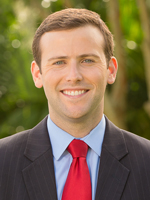
School districts and their representatives raised a number of logistical issues as a Florida House panel advanced a bill that would expand public school choice and give students more freedom to cross district lines.
It seems like a simple concept: Allow parents to enroll their children in any public school where there’s room.
The bill cleared the K-12 Subcommittee with bipartisan support, but not before its sponsor, Rep. Chris Sprowls, a freshman Republican from Palm Harbor, fielded a litany of questions about how it would affect everything from funding to high school athletics.
Ruth Melton of the Florida School Boards Association praised the idea of promoting school choice among districts, but suggested lawmakers look for more ways to accommodate low-income families who want to take advantage of the bill.
“There are a number of concerns,” she said, “… but none of them insurmountable.”
Here’s a rundown of some of the issues that came up:
Why?
Rep. Bruce Antone, D-Orlando, wanted to know what the “rationale” was for allowing students to attend public schools across district lines.
Sprowls’ short answer: “Opportunity, sir.”
He elaborated: “We can’t always choose where we come from, what neighborhood we’re born into. But what we can do as a Legislature is do what we’re trying to do with this bill, to empower parents, regardless of where they come from or what neighborhood that they’re in. It’s to give their child an opportunity. That opportunity, hopefully, is right down the street. But if it’s across the bridge, in another school district, they’ll have that opportunity as well.”
Transportation
A few people noted that transportation could be a barrier to school choice for low-income families.
Sprowls agreed. He also noted families could be helped by a program already on the books.
While Florida’s tax credit scholarships are mostly known for helping low-income families to pay private school tuition, there’s also a provision allowing transportation scholarships for parents who want to send their children to public schools outside the school district where they live. The option is little-used now, but if more students attend schools across district lines, it could become more relevant. Step Up For Students, which co-hosts this blog and employs the author of this post, is one of the nonprofit organizations that funds the scholarships.
Timing
Vern Pickup-Crawford, the lobbyist for the Palm Beach County school district, said districts need months of lead time to plan their existing choice programs. The same could apply to new options created under HB 1145.
“The seats were filled by the beginning of this calendar year,” he said. “Our principals, today… know what students are enrolled for next year. They have already or are still hiring their teachers to make sure they’ve got the staffing and they’re … building their schedules by classroom for the start of school in August.”
Rep. Erik Fresen, R-Miami, questioned whether there was so much “pent-up demand” for specific schools that incoming students would overwhelm districts. After revisions Tuesday, the bill would allow parents to transfer into schools that are below 90 percent capacity.
The remaining 10 percent is intended to allow districts room to maneuver in case students move to the area around a school, but Pickup-Crawford said there might still be issues figuring out which schools have room for more students.
Funding
Another common line of questioning dealt with funding. Florida funds public schools through a mix of general revenue and local property taxes, which are distributed by the state to ensure, as much as possible, that money follows students equitably.
But what about local taxes that districts levy to fund school construction?
Sprowls said districts could address those issues, including sharing of funds, through inter-local agreements. Such an agreement, he said, already allows hundreds of students to attend schools in Pinellas County, which he represents, from neighboring Pasco.
Athletics
Reps. Larry Lee, D-Port St. Lucie, and Shevrin Jones, D-West Park, both supported the bill but said they wanted to work out some issues raised by their local district superintendents.
Both also asked whether allowing more students to transfer among public schools would affect the state’s system governing interscholastic sports, including efforts to curb athletic recruitment of high school students.
That issue, Sprowls noted, is expected to be taken up Thursday by the House Education Committee. It has proposed wide-ranging legislation addressing the relationships between school choice, high school sports and extracurricular activities.


